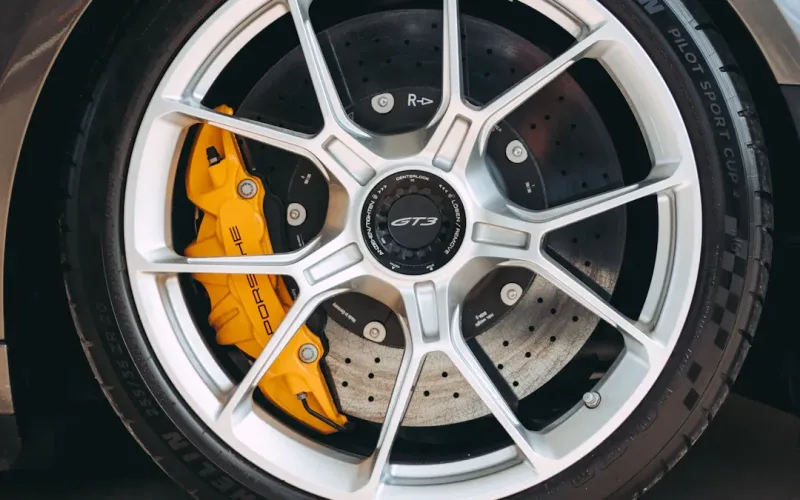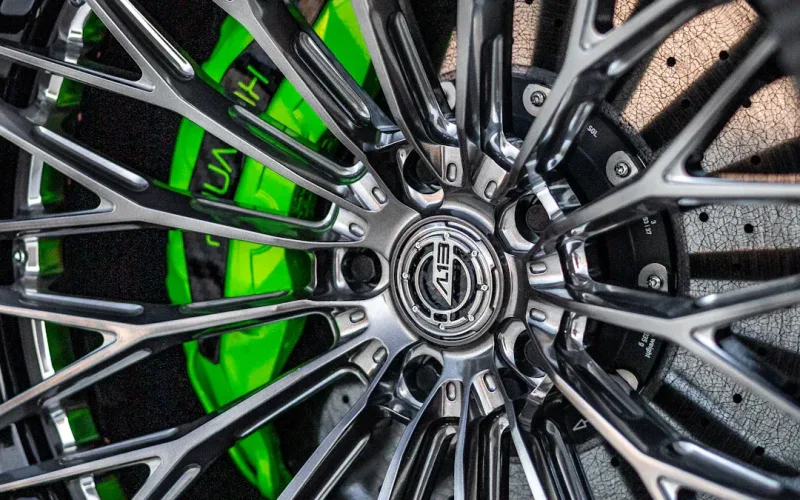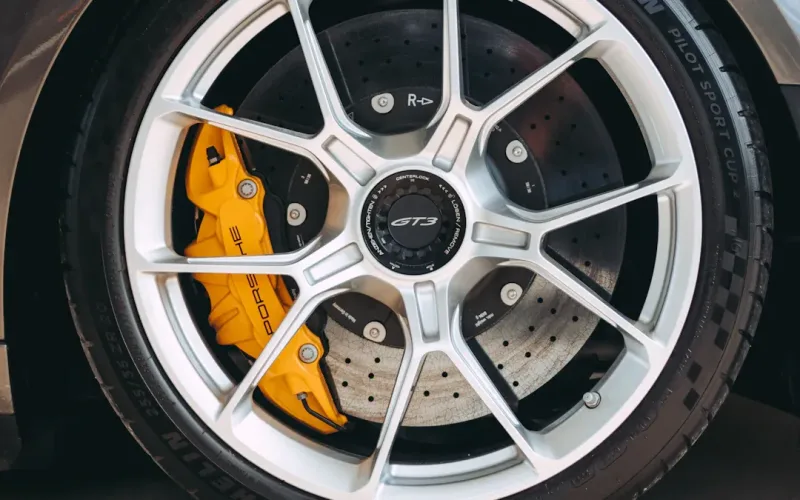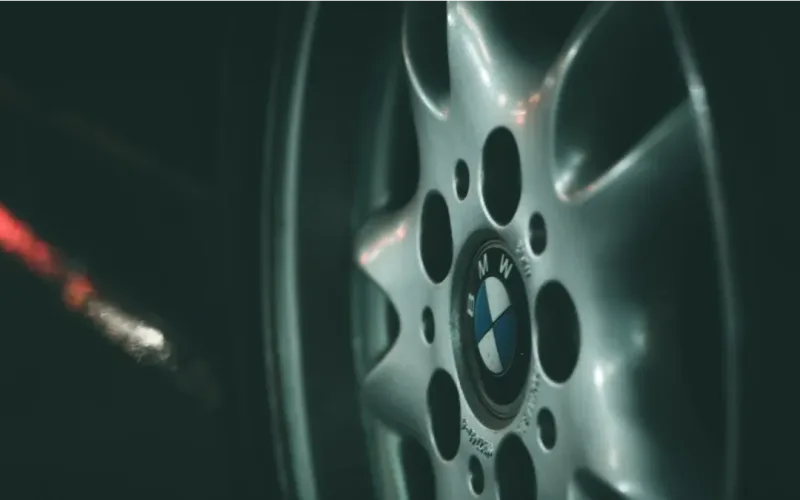Are Wheel Well Weights the Secret to Better Vehicle Handling


fortuneau
June 17, 2025
How to Choose the Best Sticker Wheel Weights for Alloy Rims
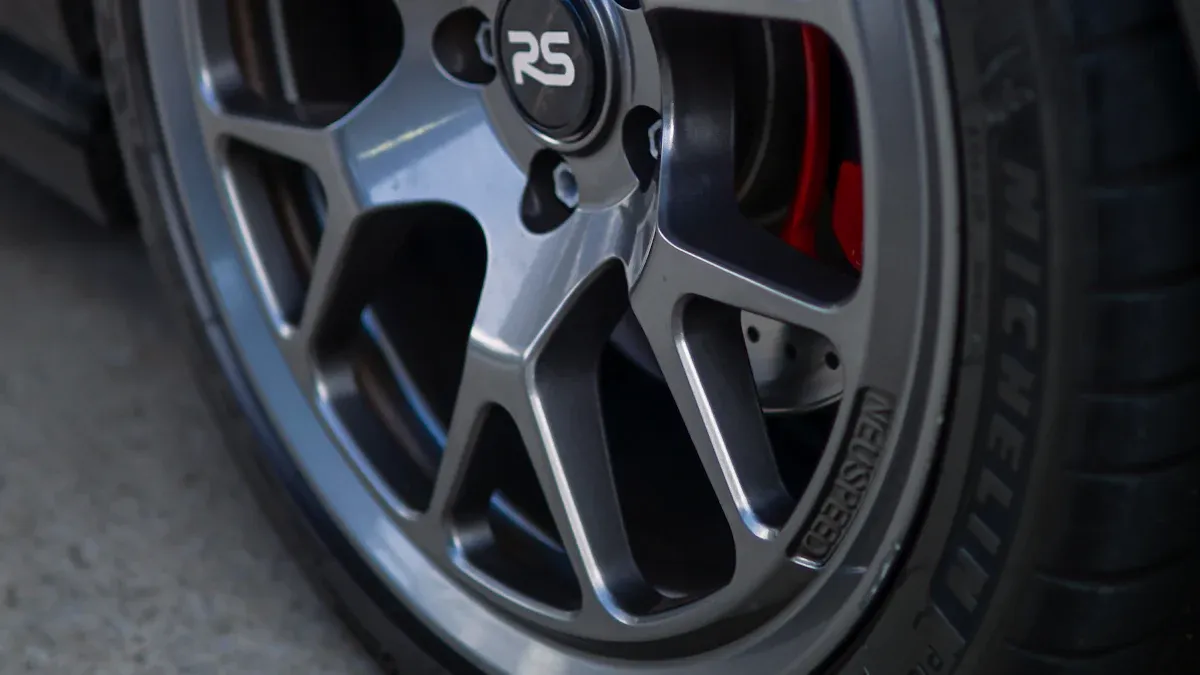
You want your alloy rims to look sharp and last a long time. Sticker wheel weights help you balance your wheels without scratching the surface. These wheel weights use strong adhesives and safe materials. You protect your wheels and support vehicle safety when you choose the right sticker wheel weights. Many drivers prefer sticker wheel weights because they work well with alloy rims and resist harsh weather.
Sticker Wheel Weights for Alloy Rims

What Are Sticker Wheel Weights?
Sticker wheel weights, also called stick-on weights, help you balance your wheels without damaging your alloy rims. Manufacturers first introduced stick-on wheel weights in the early 1970s. They designed these weights for aluminum and alloy wheels that do not have flanges. You will find that sticker wheel weights come in strips or segments. You can cut or break them into smaller pieces to match the exact weight you need for wheel balancing.
These weights use strong adhesives to stick directly to the inside of your rim. You do not need special tools to install them. Most sticker wheel weights are made from metals like lead, zinc, or iron. The density of the material affects how large or small each weight needs to be. You can choose from different types of wheel weights, but stick-on weights offer a clean look and precise placement.
Tip: Always check the material and adhesive quality before you buy sticker wheel weights. Good materials and strong adhesives help your wheels stay balanced for a long time.
Sticker wheel weights play a key role in wheel balancing. They help fix uneven mass distribution in your wheel and tire assembly. This keeps your ride smooth and safe, even at high speeds.
Why Sticker Wheel Weights Are Ideal for Alloy Rims
You want your alloy rims to look great and last. Sticker wheel weights are perfect for alloy rims because they do not scratch or damage the surface. Unlike clip-on wheel weights, stick-on weights attach with adhesive, so you avoid marks or dents on your alloy wheels.
Stick-on weights fit well with the smooth design of alloy rims. You can place them on the inside of the rim, which keeps them hidden and protects the appearance of your wheels. This also helps prevent corrosion and keeps your wheels looking new.
Sticker wheel weights also offer other benefits:
- They improve driving comfort by reducing vibrations.
- They protect your vehicle’s suspension and steering parts from extra wear.
- They help you meet environmental standards, as many stick on wheel weights use recyclable materials.
You can use sticker wheel weights for many types of alloy rims. They work well for both original equipment and aftermarket wheels. Automotive wheel weights like these help you keep your car safe and your wheels balanced. When you compare stick-on weights to clip-on wheel weights, you will see that stick-on weights are better for modern alloy rims.
Key Factors in Choosing the Best Wheel Weights
Compatibility with Alloy Rims
You want your wheels to stay balanced and your alloy rims to remain in top shape. Compatibility is the first thing you should check when choosing the best wheel weights. Stick-on weights work best for alloy rims because they do not scratch or dent the surface. You can place adhesive wheel weights closer to the tire’s contact patch. This gives you a more precise and smoother ride.
Proper surface preparation is important. Clean the rim before you apply the weights. This helps the adhesive stick better and last longer. When you match the weight type to the rim material, you get optimal balance and avoid damage. Clip-on wheel weights often suit steel rims, but stick-on weights are the top choice for alloy rims.
- Stick-on weights improve handling and ride quality.
- You can place them exactly where you need for balancing.
- Longevity tests show stick-on weights stay on better than clip-on wheel weights, even in tough conditions.
You should always check that the wheel weights you choose fit your specific rim type. This ensures your wheels stay balanced and your alloy rims look great.
Material Choices: Steel, Zinc, and Lead
The material of your wheel weights matters for both performance and safety. Today, most automotive wheel weights use steel or zinc. These materials are strong, durable, and safe for the environment. Steel wheel weights offer excellent strength and resist corrosion. They last a long time, even in harsh weather. Zinc wheel weights also resist corrosion and are flexible, making them easy to use for balancing.
Lead was once common in wheel weights because it is dense and cheap. Now, most countries ban lead for environmental and health reasons. Steel and zinc have become the preferred choices. They help you meet environmental rules and keep your car safe.
Here is a table that shows the importance of each key factor and some research highlights:
| Key Factor | Importance and Evidence | Numerical Data / Research Highlights |
|---|---|---|
| Installation Method | Adhesive (sticker) weights preferred for alloy wheels due to discreet placement and aesthetics; requires proper surface prep for strong adhesion. | Installation quality affects durability and performance. |
| Material Selection | Shift from lead to eco-friendly materials like steel (recyclable) and zinc (corrosion resistant and flexible). | Lead banned in EU and US; steel and zinc favored for environmental compliance. |
| Regulatory Compliance | Compliance with environmental regulations critical; lead banned in many regions, driving material innovation. | Global market size USD 727.8 million (2024), expected to grow to USD 1.35 billion by 2034 at CAGR 6.4%. |
| Accuracy and Durability | Precise weights reduce tire wear and vibrations; durability ensures long-term adhesion and corrosion resistance. | Best-selling adhesive weights have strong, weather-resistant adhesives; corrosion resistance is a key feature. |
| Market Trends | Growing demand for non-lead, eco-friendly wheel weights; adhesive weights popular for high-performance and alloy wheels. | Market growth driven by automotive production and regulatory shifts; EVs may reduce demand but luxury vehicles sustain it. |
| Compatibility | Adhesive weights compatible with many wheel types, especially alloy wheels where clip-on weights may cause damage. | Emphasized in product guides; no direct numerical data but supported by product popularity and application ease. |
Steel and zinc wheel weights help you achieve optimal balance and meet modern standards. You protect your alloy rims and the environment when you choose these materials.
Adhesive Quality and Weather Resistance
Adhesive quality is a key factor in how well your stick-on weights perform. You want your adhesive wheel weights to stay in place through rain, heat, and road debris. High-quality adhesives keep your wheel weights secure, even after months of driving.
Durability tests show that the best adhesives can handle extreme weather. For example:
- Labels with strong adhesives survived six months in a desert environment with high UV, heat, and humidity.
- Adhesion strength ranged from 30 to 118 lbs./in, which means the weights resist pressure washing and peeling.
- These adhesives also withstand up to 8,000 abrasion cycles and resist chipping from gravel.
- They tolerate temperatures up to 1,000°F, much higher than what you see on the road.
You should always choose adhesive wheel weights with proven weather resistance. This ensures your balancing stays accurate and your alloy rims remain undamaged. When you use high-quality stick-on weights, you get long-lasting performance and peace of mind.
Tip: Always clean the rim surface before applying stick-on weights. This simple step helps the adhesive bond better and keeps your wheels balanced for longer.
Durability and Performance on the Road
You want your wheels to stay balanced and safe, even when you drive on rough roads or in bad weather. Durability matters a lot when you choose sticker wheel weights for your alloy rims. High-quality wheel weights use strong adhesives and tough metals. These features help the weights stay in place during long trips, heavy rain, or extreme heat.
When you use sticker wheel weights, you get reliable balancing for your tires. Good balancing keeps your ride smooth and reduces tire wear. You also protect your car’s suspension and steering parts. Many drivers notice fewer vibrations and better control after proper balancing with sticker wheel weights.
Here are some ways sticker wheel weights meet performance requirements on the road:
- They resist peeling and falling off, even after thousands of miles.
- The adhesive holds up against water, salt, and dirt.
- The weights do not rust or corrode, so your rims stay clean.
- You get accurate balancing, which helps your tires last longer.
Note: Always check your wheels after driving in harsh conditions. If you see a weight missing, replace it right away to keep your wheels balanced.
Sticker wheel weights give you peace of mind. You know your wheels will stay balanced and your car will handle well, no matter where you drive.
Aesthetics and Low-Profile Options
You care about how your alloy rims look. Sticker wheel weights help you keep your wheels looking sharp and stylish. These weights sit flat against the inside of the rim, so you do not see them from the outside. This low-profile design keeps your wheels clean and modern.
Many sticker wheel weights come in slim shapes and neutral colors. You can match them to your rim’s finish for a seamless look. When you use these weights, you avoid the bulky appearance of clip-on weights. Your alloy rims stay free from scratches and dents.
Here are some reasons to choose low-profile sticker wheel weights for your car:
- They hide behind the spokes, so only you know they are there.
- The smooth design makes cleaning your rims easier.
- You keep the original look of your wheels without extra hardware showing.
Tip: If you want your car to look its best, always choose low-profile sticker wheel weights. They give you the balancing you need without changing your wheel’s appearance.
Sticker wheel weights let you enjoy both style and function. You get perfect balancing and a clean look every time.
Environmental and Regulatory Compliance
You want to protect the environment while keeping your car safe. Sticker wheel weights made from environmentally friendly materials help you do both. Many countries now ban or restrict lead in wheel weights. Manufacturers use safer metals like zinc and steel, which do not harm the environment.
You also see new rules that push companies to use recycled and biodegradable materials. For example:
- California’s Proposition 65 and the EU’s REACH law limit harmful substances in car parts.
- Many states and countries now require lead-free wheel weights.
- Companies use adhesives that break down naturally and metals that can be recycled.
- Big brands like Henkel and 3M focus on making eco-friendly products.
- The market for adhesive wheel weights grows fast, with more drivers choosing green options every year.
Automakers and service shops now look for products that meet strict environmental standards. They want to show they care about the planet and follow global agreements like the Paris Agreement. You help the environment when you choose sticker wheel weights made from environmentally friendly materials.
Callout: Choosing eco-friendly sticker wheel weights supports cleaner air, safer roads, and a better future for everyone.
Sticker wheel weights meet today’s strict rules and help you drive with confidence. You get the balancing you need and help protect the world at the same time.
How to Install Sticker Wheel Weights on Alloy Rims
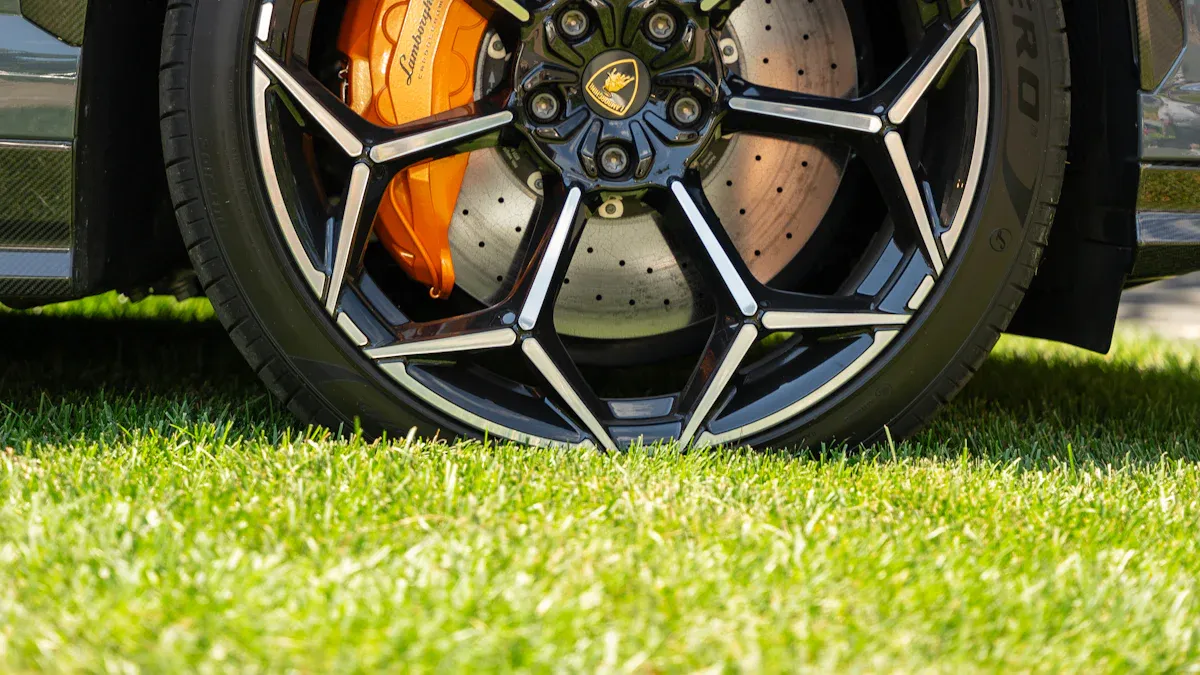
Surface Preparation for Alloy Rims
You want the best results when you install sticker wheel weights. Start by preparing the surface of your alloy rims. Dirt, grease, and rust can weaken the adhesive. Use a degreaser or rubbing alcohol to clean the area where you plan to place the weight. Dry the spot with a clean cloth. Check for cracks, dents, or uneven spots that could affect how well the weight sticks. A smooth, dry surface helps the adhesive bond last longer.
Tip: Always avoid using harsh chemicals that might damage the finish of your alloy rims.
Placement and Application Steps
Follow these steps to apply stick on wheel weights correctly:
- Use a wheel balancing machine to find the exact spot that needs balancing.
- Mark the location on the inner side of the rim with chalk or a marker.
- Peel off the backing from the adhesive side of the weight.
- Align the weight over your mark.
- Press the weight firmly for 10-15 seconds to make sure it sticks well.
- Double-check that the weight sits flat and has no bubbles or wrinkles.
- Let the adhesive cure for a few hours before you drive.
If you work in cold weather, warm the adhesive slightly to help it bond better.
Ensuring Optimal Adhesion
You want your sticker wheel weights to stay in place for a long time. After you apply the weights, inspect them to make sure they are secure and straight. Use a tire balancing machine to check for any remaining imbalance. Take your car for a short drive and listen for vibrations or noise. If you notice any problems, adjust or reinstall the weights as needed. Regularly check your wheels, especially after long trips or tire changes, to make sure the weights have not moved.
Note: Proper installation and regular checks help you keep your alloy rims balanced and looking great.
Maintenance Tips for Sticker Wheel Weights
Regular Inspection and Care
You should check your sticker wheel weights often to keep your wheels balanced and your ride smooth. Look for signs of wear, corrosion, or if any weights have come loose. Use your eyes and hands to inspect each wheel. If you notice a missing or damaged weight, replace it right away. Regular checks help you catch problems before they affect your driving comfort or tire life.
Tip: Schedule a quick inspection every time you wash your car or rotate your tires. This habit helps you spot issues early.
Cleaning and Maintenance
Keeping your wheels clean protects both the rim and the adhesive on your sticker wheel weights. Use pH-balanced, acid-free cleaners with a pH between 7.5 and 8.5. These cleaners protect the finish of your alloy rims and help the adhesive last longer. Avoid acid-based or petroleum-based cleaners because they can weaken the adhesive bond.
Here are some best practices for cleaning and maintenance:
- Wash your wheels with a soft brush and pH-balanced cleaner.
- Rinse thoroughly to remove all soap and dirt.
- Dry the area completely before checking the weights.
- Inspect for any signs of corrosion or detachment.
Proper cleaning and care extend the lifespan of your wheel weights. You will notice fewer vibrations and better tire balance when you keep your wheels clean.
Replacing Sticker Wheel Weights
When a sticker wheel weight comes loose or shows damage, you need to replace it. Start by cleaning the area with a degreaser or rubbing alcohol. Dry the surface well. Peel off the old weight and remove any leftover adhesive. Align the new weight carefully, press it firmly for 10-15 seconds, and let the adhesive cure.
After you install new weights, check your tire balance with a balancing machine or take a short test drive. If you feel vibrations, adjust the weights as needed. Regular replacement and proper installation keep your wheels balanced and your ride safe.
Note: Good maintenance improves driving comfort and helps your tires last longer.
When you choose sticker wheel weights for your alloy rims, you make a smart decision for both style and function. These weights help you achieve optimal balance and support vehicle safety. Modern adhesives keep the weights secure, even in tough conditions. New materials like zinc and steel protect your rims and the environment. Sticker wheel weights give you precise wheel balancing without causing damage. Regular checks and proper care keep your wheels in top shape.
FAQ
How do you know if sticker wheel weights are right for your alloy rims?
You should check your rim’s surface. Sticker wheel weights work best on clean, smooth alloy rims. If your rims have no flanges or you want to avoid scratches, sticker weights are the best choice.
Can you reuse sticker wheel weights after removing them?
No, you cannot reuse sticker wheel weights. The adhesive loses strength after removal. Always use a new weight for the best balance and safety.
How long do sticker wheel weights last on alloy rims?
Sticker wheel weights can last for years if you install them correctly. High-quality adhesives resist heat, water, and road debris. Regular checks help you spot any loose weights early.
What should you do if a sticker wheel weight falls off?
Replace the missing weight as soon as possible. Clean the area, use a new sticker weight, and check your wheel balance. Driving without proper balance can cause vibrations and uneven tire wear.


